Hyundai’s i30 is emblematic of the Korean brand’s success in Australia. Now, globally, considered alongside Toyota’s iconic Corolla in the halls of hatchback fame, the current generation i30 has proven it deserves its place.
It’s been a few years since the launch of the third-generation hatch, though, and just before 2021 kicked off, the brand gave it a mid-life facelift. So, what’s changed? And, can it stay competitive in the tough mid-size hatch segment which now, more than ever, is under siege from the SUV market and exchange rate pressures?
I drove a mid-grade Elite for a week to find out if the i30 still has what it takes.
.jpg)
Hyundai I30 2021: Elite
| Engine Type | Inline 4, 2.0L |
|---|---|
| Fuel Type | Unleaded Petrol |
| Fuel Efficiency | 7.4L/100km (combined) |
| Seating | 5 |
| Price From | $23,430 - $28,930 |
| Safety Rating |
|
Does it represent good value for the price? What features does it come with?
The i30’s range has expanded significantly in the last few years, now spanning from the base grade (simply called the i30) at $23,420, to the flagship GTI-rattling N Performance ($41,400, soon to receive its own facelift).
Our mid-grade automatic-only Elite falls about the middle of the pack with an MSRP of $30,220.
It’s tough company indeed at this price point, though, with Toyota offering its Corolla in mid-spec SX Hybrid form at $30,795, Mazda’s notoriously expensive 3 hatch coming in at Touring grade with an MSRP of $30,590, and Subaru’s Impreza, which offers all-wheel drive across the range, wearing an MSRP for its mid-grade 2.0i-L of $29,960.
Lots of options there, but we will say the i30 offers some compelling things which others may not at this price. Our Elite comes packed with standard features, including faux-leather seat trim, a new-for-this-update 10.25-inch multimedia touchscreen with built-in navigation dominating the dash, a semi-digital instrument cluster, 17-inch alloy wheels, a wireless phone charger, premium audio system, dual-zone climate control, and LED puddle lights.
.jpg)
All i30s now get the brand’s 'SmartSense' active safety suite, too, but the Elite grade adds blind spot monitoring, rear cross traffic alert, and safe exit warning over lesser cars in the range. For more on this, check out the safety section of this review.
Some notable omissions on the Elite grade include LED headlights, a power adjustable driver’s seat, auto-dimming rear-view mirror, and a holographic head-up display, which some rivals get at this price.
The i30 also misses out on alternate drivetrain options at the Elite level, with no Hybrid (Corolla) or all-wheel drive (Impreza). Regardless, some will be more than willing to choose the i30’s six-speed automatic in order to avoid common CVT alternatives.
_0.jpg)
Is there anything interesting about its design?
Hyundai has gone from playing catch-up with popular rivals from a design standpoint to leading the pack with strong design choices.
The existing i30 was already a good-looking car which had even dated well over its almost four-year run. This new one tweaks the formula, but perhaps not as significantly as its new sedan sibling.
The side profile communicates the same European poise as before, as does its largely unchanged rear design, but the 2021 update brings with it an aggressive new face, with a dominating latticed grille and matching LED DRL fittings.
.jpg)
Two-tone alloys class up the wheelarches, while the interior benefits from a slight nip and tuck as well as the huge screen which looks great at this price.
Little needed to change here, with the i30 already having a pleasingly symmetrical dash design and sensible materials at this price, but the re-designed centre console with electronic parking brake in lieu of a manual handbrake is welcome, as is the new semi-digital dash cluster which replaces the old analog instruments, but I must say it is suspiciously Corolla-esque in its layout.
The seat design is clearly faux leather but is hard wearing and comfortable enough regardless, and the soft-touch surfaces throughout are noted, especially over the i30’s Kona small SUV sibling which doesn’t quite feel as nice despite sharing many of its fittings.
.jpg)
How practical is the space inside?
Despite its more outlandish design, it still has one of the more spacious and airy cabins in this class. Up front there is excellent adjustability for front passengers, with large window apertures granting great visibility.
Unlike the Corolla, there is also an abundance of cabin storage areas for front passengers, with large bottle holders and binnacles in the doors, large bottle holders in the centre console, a large cubby with retractable cover under the climate controls (which also houses the wireless phone charger), USB port and 12V power outlet, a soft-topped centre console box which houses a second 12V outlet, as well as a roof-mounted sunglass holder and standard glove box.
Rear passengers get healthy legroom for the class, with my own 182cm (6'0") tall frame allowing airspace for my knees behind my own seating position and decent headroom, too.
.jpg)
The large windows help keep the rear seats feeling spacious, and there are small bottle holders in the doors, and medium-sized ones in the (also leather-clad) drop-down armrest.
Rear passengers benefit from adjustable rear air vents, but there are no power outlets for the second row. Extra storage comes only from a set of flimsy nets on the backs of the front seats.
.jpg)
The i30 has an excellent-for-the-class 395 litre (VDA) boot, which consumed our test luggage set with ease, and easily rivals some SUVs.
.jpg)
For reference, the boot of the Corolla, Mazda3, and Subaru Impreza are all smaller, with the i30 being out done by its sister car, the Kia Cerato (428L).
This update also brings a full-size alloy spare to all variants aside from N-Line versions, in a win for long-distance drivers.
_0.jpg)
What are the key stats for the engine and transmission?
Powering our i30 Elite is a decidedly traditional non-turbo 2.0-litre petrol four-cylinder engine producing 120kW/203Nm.
It is perhaps the least advanced part of an otherwise modern package, making us wish for a hybrid or the more expensive 1.6-litre turbo available in the N-Line.
_0.jpg)
The 2.0-litre engine is mated to a rather good six-speed (torque converter) automatic, which will be preferable for those looking to avoid the rubbery, dull drone of a CVT.
The i30 Elite is front-wheel drive only, and unlike its N-Line alternative, misses out on multi-link rear suspension, making do with a cheaper but adequate torsion beam.
How much fuel does it consume?
The i30 Elite has a hardly impressive claimed/combined fuel consumption figure of 7.4L/100km but is it honest given this car’s somewhat dated drivetrain?
Over my week of what I would consider reasonably ‘combined’ driving, the car returned a dash-reported figure of 10.1L/100km, which doesn’t sound great, but is, in fact, exactly on Hyundai’s own (surprisingly honest) ‘urban’ figure of 10.1L/100km for this car.
.jpg)
For reference I produced a real-world figure of just 4.8L/100km over the course of a long-term loan of a Toyota Corolla hybrid. Half the fuel this car might use if you were to drive it around town every day.
Mercifully, the i30 drinks base-grade 91RON unleaded fuel, and all variants have a 50-litre fuel tank.
What's it like to drive around town?
Dated 2.0-litre engine or not, the i30 continues to be a great little car to steer, even amongst extremely tough company in this segment.
The seating position in this car is a little higher than some, but it speaks to its brilliant design that there’s still leagues of headroom and excellent visibility out all quadrants.
The steering is highly adjustable, and is in a nice state of tune. It’s not as overly-electrically-assisted as its (sadly now discontinued) Veloster stablemate, while not being as firm as its Korean cousin, the Kia Cerato.
It communicates a nice level of feel making it entertaining on a windy road, but is not as light and easy as the VW Golf or Toyota Corolla.
Balance, then is this car’s sweet spot. This seems the case for its suspension tune, too. Make no mistake, the i30 sits on the sportier side of the spectrum, with a communicative and lively ride, but it’s not as firm as its Kia Cerato cousin, stopping short of ever being too unpleasant.
There are better cars in this class (again, like the VW Golf or Toyota Corolla) when it comes to a more subtle comfort tune for every-day rough roads, but regardless, the i30 does a fantastic job for those looking for a sporty edge.
.jpg)
Engine-wise the 2.0-litre is feeling its age when it comes to power delivery and refinement, but it does have enough overall oomph to keep the i30 feeling light thanks to how responsive it manages to be.
This brings us to the six-speed torque converter auto, which serves its purpose of never getting in your way or sapping the fun out of the drive. It's good, and I have nothing to say about this transmission other than it does exactly what it says on the tin.
Not much has changed on the driving front in this car since the pre-facelift model, but I’d argue not much really needed to change.
The i30 possesses a simple formula which works for the majority of motorists, and one which is easy to make fun while being relatively simple mechanically. I’m even a fan of its slightly sporty but never unpleasant bent over some of its rivals.
Just don’t be tricked by its sci-fi Korean bodywork and interior tech into thinking you’re getting a cutting-edge driving experience. It simply feels behind compared to hybrid and turbocharged rivals.
Warranty & Safety Rating
What safety equipment is fitted? What safety rating?
Hyundai’s SmartSense safety kit is now standard across the i30 range. Active items include auto emergency braking (radar-based, works from city to freeway speeds, detects pedestrians and cyclists), adaptive cruise control, lane keep assist with lane departure warning.
The Elite level, as tested here, also features blind spot monitoring, and rear cross traffic alert with safe exit warning (lets you know not to open the door if there are vehicles approaching in the next lane).
The only notable omission on the Elite’s active safety suite is traffic sign recognition (although it reports speed limits sourced from its nav system in the dash cluster).
It also scores seven airbags, tyre pressure monitoring, as well as a reversing camera and sensors. There’s no top-down camera suite and front parking sensors are only available on the top-spec N-Line Premium.
_0.jpg)
In terms of child seats, there are two ISOFIX mounting points on the outer rear seats, and three top-tethers across the whole rear row.
The i30 hatch maintains a five-star ANCAP safety rating, although this was awarded to its pre-facelift model back in 2017. So it hasn't been assessed against the current, far stricter standards, and it does not have a score breakdown based on its collision protection or active systems.
Hyundai i30s for our market are sourced from the Korean giant’s Ulsan plant in its home country of South Korea.
What does it cost to own? What warranty is offered?
Hyundai covers all its cars with a competitive five year and unlimited kilometre warranty promise, up to date with all of its Japanese competitors, but still behind its sister brand Kia, which warrants the same drivetrain in its Cerato hatch for seven years.
Hyundai scratches back some lost value when it comes to servicing however, with indicative fixed prices extending to 15 years/225,000km, and beyond.
Prices for the first five scheduled services to 60 months or 57,000km are fixed at $299 (again, suspiciously close to Toyota’s servicing promise), although the next service at 72 months notably jumps to $350.
The most expensive one we spotted in the long schedule was at 10 years/150,000km at $510. Good to know if you actually plan on owning it for the long term.
Interestingly, service pricing for i30s with the tried-and-tested 2.0-litre petrol four cylinder is a lot cheaper than its equivalent Cerato over at Kia which (true to 2019 numbers) cost a yearly average of $419.86 for the life of its seven year warranty to service.
Verdict
The i30 gets a fresh face and, at this Elite level, a neat multimedia overhaul for the 2021 model year. Really, this is most of what’s changed here, but I’d argue Hyundai was right not to mess with a very good formula.
Despite an exchange-rate driven price-hike, the i30 maintains its position as an excellent value and fun-to-drive hatchback amongst its peers.
The only thing I find myself wondering is why it's taking so long to introduce a hybrid variant.
Pricing Guides


_0.jpg)


.jpg)
.jpg)


















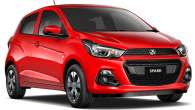
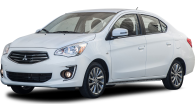






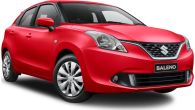





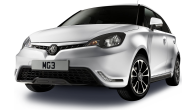


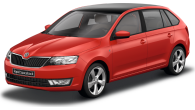
.jpg)
.jpg)
.jpg)



